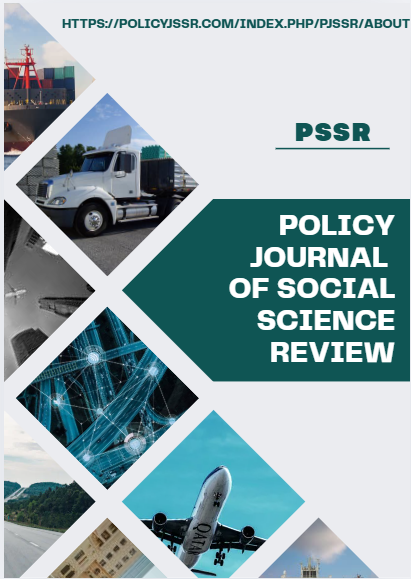FACTORS AFFECTING THE ADOPTION AND INTENSITY OF AGROFORESTRY IN TEHSIL TAKHT BHAI, MARDAN
Abstract
This study was designed to determine the factors affecting agroforestry and the intensity of adoption in Tehsil Takht Bhai District Mardan Khyber Pakhtunkhwa. The data were collected by a well-structured questionnaire. The dependent variable of the study was a binary variable indicating whether a farmer adopted agroforestry or not. The study used the Probit and Logit models to calculate the odd ratio of the adoption of the agroforestry and to find out the factors affecting the adaption. One of main reasons for farmers adopting agroforestry could be better revenue compared to the traditional agricultural system. Therefore, the enterprise budgeting was performed first. The enterprise budget indicated that agroforestry adopters received more revenue as compared to non-adopters. The study also found that age of farmer, education of farmer, total land in acres, and revenues previously received from farming were positively contributing to the adoption of agroforestry and respective probabilities of intensities were 78 %, 1 %, 2%, and 43%. On the other hand, experience of farming, income from non-farm sources, expenditure incurred on farming were negatively affecting the adoption of agroforestry and the respective probabilities of intensities were 20%, 200%, and 13%. Family size of the farmers did not affect intensity of adoption which may be at odd with the general perception that availability of labor through own family members could be an important factor of adoption and intensity. The study also estimated the break-even prices for wheat and sugar cane crops. The study found that sugar cane was a more desirable crop compared to wheat. The current study found that if there were a decrease in the output prices of wheat (up to 11.21%) still the crop will generate positive revenue. On the other hand, the breakeven price analysis of the sugar cane showed that if there was a decrease in market price of the crop by 8.66% (from Rs. 180 to Rs.164.41), still it would generate positive revenues. Finally, trans log profit function was used to estimate the supply response function for wheat, sugar cane, hay and poplar. The results revealed that a 1% increase in the output prices of wheat and hay will increase the output by approximately 55%. Poplar trees take approximately 5 years rotation period, and 1% increase in the output prices of poplar will increase the production of poplar by approximately 20%. Increase in sugar cane prices by 1% will increase the production of the crop by approximately 35%. There has been a lack of revenue estimates for agroforestry in combination with various crops. It is recommended that the agricultural extension department should conduct some awareness sessions with local farmers to inform them of both revenue as well as non-market benefits. The limitations of the study included the reliability of the collected data as the data were collected for the five years and depended upon the recall by farmers as proper record of data was not kept. Lastly, we could not collect the data on the non-market benefits of agroforestry which could be significant in terms wind breakers, salinity control and many others. Based on the results from this study, it is recommended that training and extension services may be provided to inform the farmers of the benefits that the agroforestry system offers. Also, the farmers may be trained and encouraged for proper record keeping of the farm activities. Finally, the study could be extended to value the non-market benefits that the agroforestry system offers.





